Looking for a changelog tool to keep your users in the loop easily? If yes, then you landed at the perfect spot.
A changelog tool helps your organization stay connected to your users by keeping them notified about the changes and updates that happen in your product. Changelogs are equally important for your internal team so that they can stay updated about vital changes.
What Is a Changelog Tool?
A product changelog tool is a software/widget that stores all minor and major changes in an application or project. Here’s a sample changelog tool for one of our clients.
Changelog tools are generally the communication bridge between your Company and end users. It’s a must-have tool as it helps your current and future customers understand what changes and developments are happening with the product. As a Product Owner/Manager, it also helps you automatically notify users requesting certain features.
Why Is It Important to Have a Changelog?
There are several reasons why having a changelog is essential, with the main one being announcements of product updates.
Here’s why you should have a changelog:
- Build Trust: Most users will consider using a regularly updated product vs. one that doesn’t get many updates. Using a changelog, you can easily show how often your product updates. It shows the user that your product is regularly updated and maintained.
- Transparency: The easiest way to be transparent with all your updates is by having a “Public Changelog” This helps your users quickly see what changes are happening and their impact.
- Keep Users in Loop: Some changelog tools like Olvy have a user notification feature; using this, you can easily notify your users and ensure they stay updated even if they haven’t checked your changelog yet.
- Get Feedback: Every update to your push will be liked by some and disliked by some, and it’s vital to hear from both groups. Changelog tools like Olvy allow you to get user feedback through comments and ratings, so you can easily understand the user’s sentiment post the update.
How to Write Releases for Changelog?
As a product manager, the essential document you will write is the release notes. These are a document that describes the new features of the product.
Writing release notes is pretty easy if you follow the tips mentioned below:
- Write a clear, concise explanation of what's changing.
- Include the reason behind the change.
- Explain how to use the new feature.
- Avoid technical jargon unless it's necessary.
Best Changelog Tools to Consider
Here’s an elaborate list of the best changelog tools to announce product updates and releases to your team and users.
Olvy
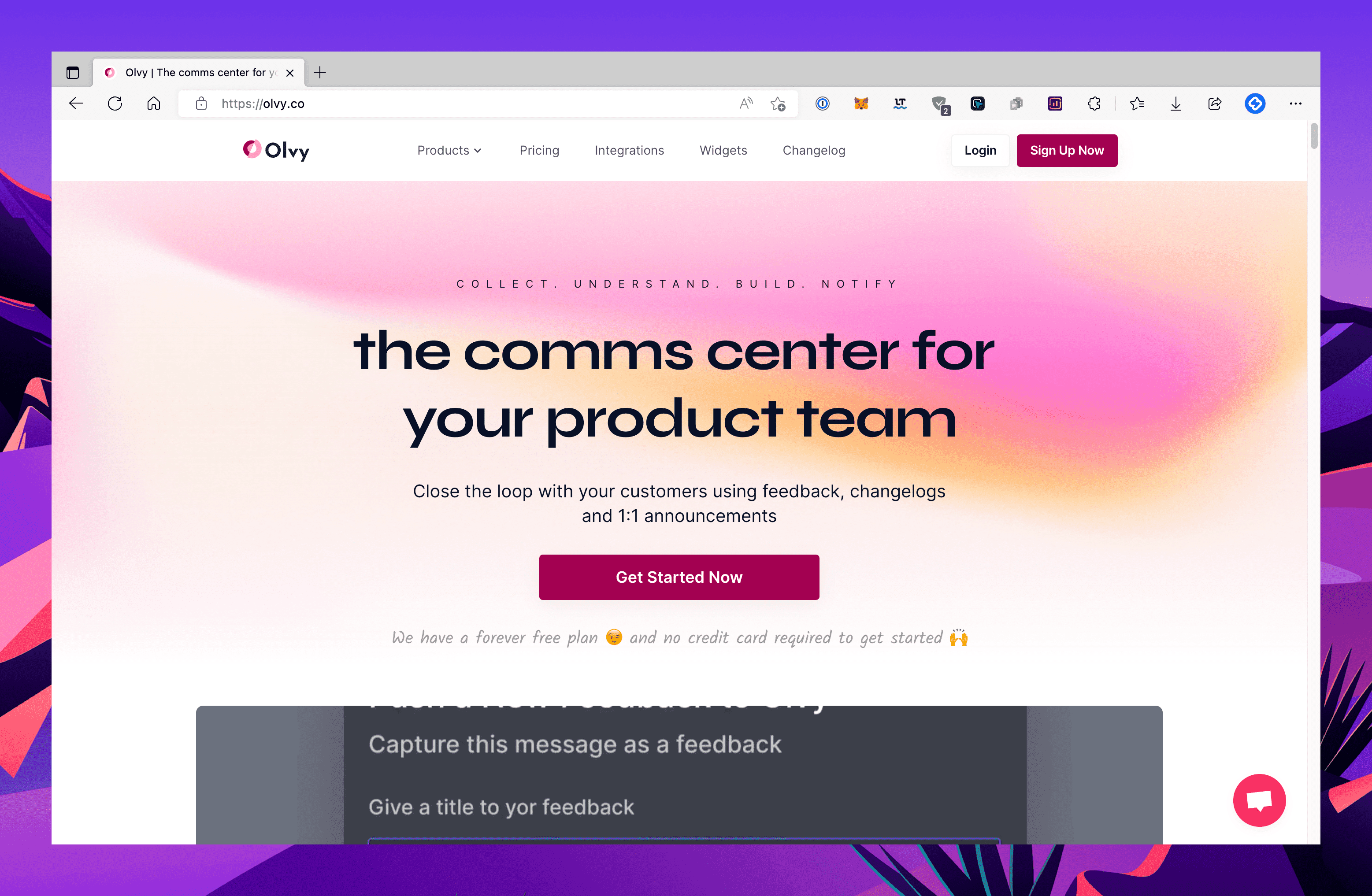
Olvy is a cool product feedback management tool with a beautiful and functional changelog tool. Using it, you can easily create your own changelog for FREE and start adding release notes instantly.
You also get access to SEO settings with Olvy, so your changelog tool can start popping on Google and act as a lead generation tool. Isn’t it super cool already?
Features of Olvy’s Changelog Tool:
- Custom domain support
- White-label option, remove “powered by Olvy” with ease
- Emoji reactions
- Collect feedback for releases
- Email notifications to all users
- Announce releases on Twitter (*coming soon)
As said in the beginning, Olvy is more than a changelog tool. It’s a product feedback management tool. Hence, it comes with numerous additional features too. Here are some of them:
- Feedback Widget: An independent no-code feedback widget you can implement anywhere to collect feedback with zero hassle.
- Feedback Analysis: Apart from just collecting feedback, Olvy can actually process it to find the user sentiment, most used keywords, and much more. Removes the hassle of reading all feedback from you.
- Tracked Users: When dealing with feedback, it is vital to keep track of all who provided the input. Olvy can easily keep track of it and use this to notify the user when the feedback is implemented.
- 1:1 Notification: This is one feature we are super proud of. With Olvy, you can send notifications to any user who provides feedback. Not just that, Olvy can directly answer to sources like Twitter or Crisp, so the users get the response where they share their feedback.
I’ll keep writing about our features, and you’ll keep reading, but do you know the best way? It’s actually to try out Olvy now.
GitHub

We all know GitHub is a popular code hosting and version control tool, but it also comes with a changelog feature.
Though it’s a completely free changelog tool, it lacks many basic features of a changelog tool. It has no support for images and no option to notify all your users.
The only good thing about this is that it automatically generates release notes from commit messages. It’s recommended only if you need an internal changelog for your development team, else you should stick to a proper changelog tool like Olvy.
Notion
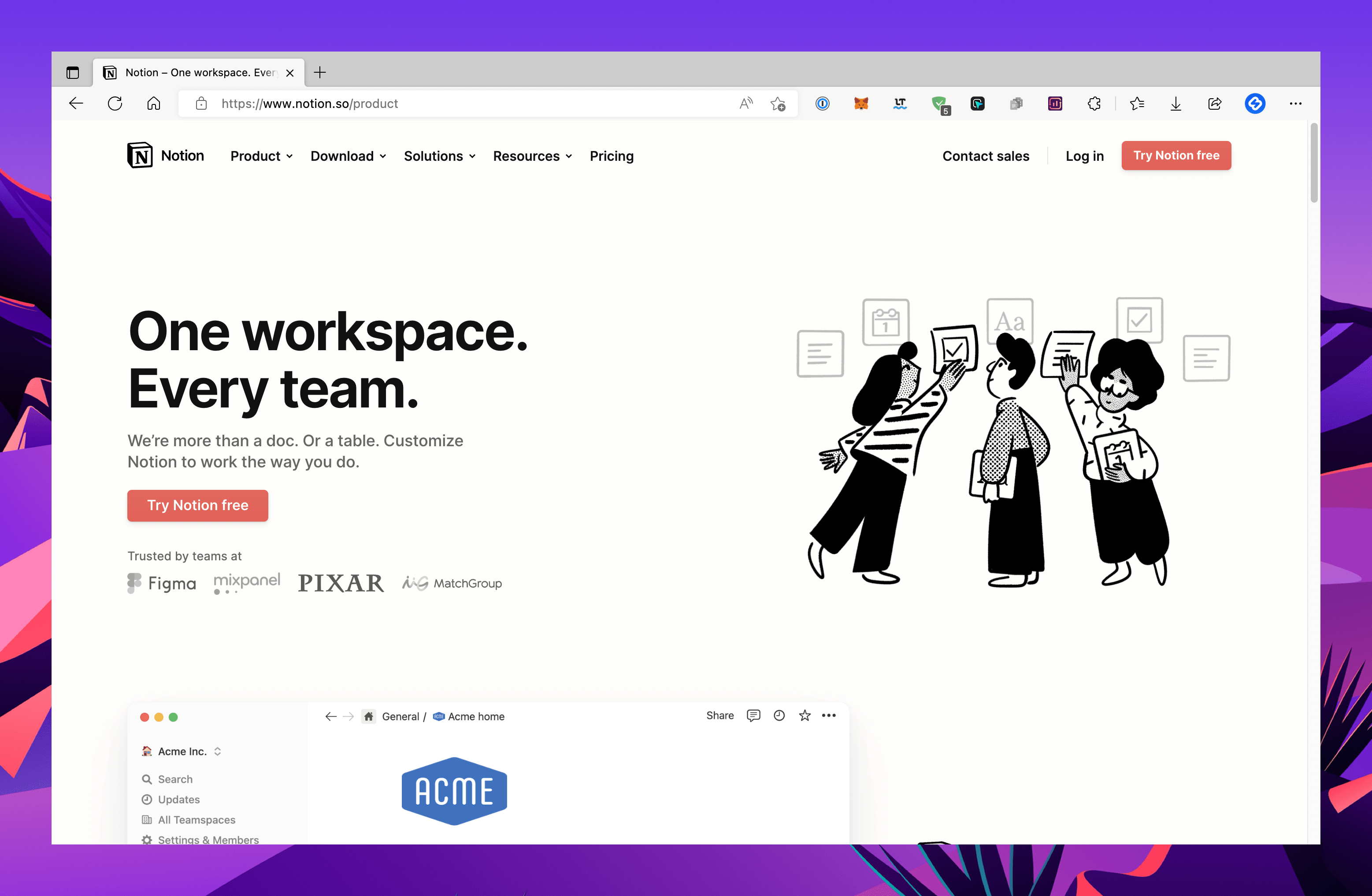
Notion is a popular multipurpose note-taking tool that can be repurposed as a changelog tool (some companies did use it as a changelog tool but eventually switched as they grew).
At first, Notion looks like a great tool for writing your release notes, but you’ll soon be greeted with numerous cons.
Though Notion has a great editor for your release notes, the lack of a custom domain and the ability to notify users is a bummer. Furthermore, their public pages are pretty slow to load and can easily frustrate your users.
Notion is a great collaborative note-taking tool but not the best for your release notes. It’s better to stick with dedicated changelog tools.
Headway

Headway launched in 2016, and it was great when it started. It also got a ton of traction due to its generous free tier. It was all fine until 2020, but it stopped getting any updates.
Furthermore, it has all the basic features but lacks some advanced yet super important features.
The ability to notify all users and support for custom CSS/JS is absent, which makes it less useful in most cases. Moreover, you’ll want to stick to the ones that are regularly updated.
You can jump to our Headway comparison page if you want a detailed comparison with Olvy.
Beamer

Beamer is yet another changelog tool with all the bells and whistles but lacks the basics again. While it is a great tool to start your release note, it's only good for a small audience.
Cons of Beamer
- It's $99/mo. Plan, too, has a monthly visitor limit.
- Even paid users must pay an extra $19/mo. for bulk email notifications.
- Lack of 1:1 notification.
- No SEO setting.
- Need to pay extra for many other features.
Beamer is super expensive compared to others. Features of Beamer's $99 a-month plan are way less than Olvy's $60 monthly plan. You can check the full comparison here.
ReleaseNotes
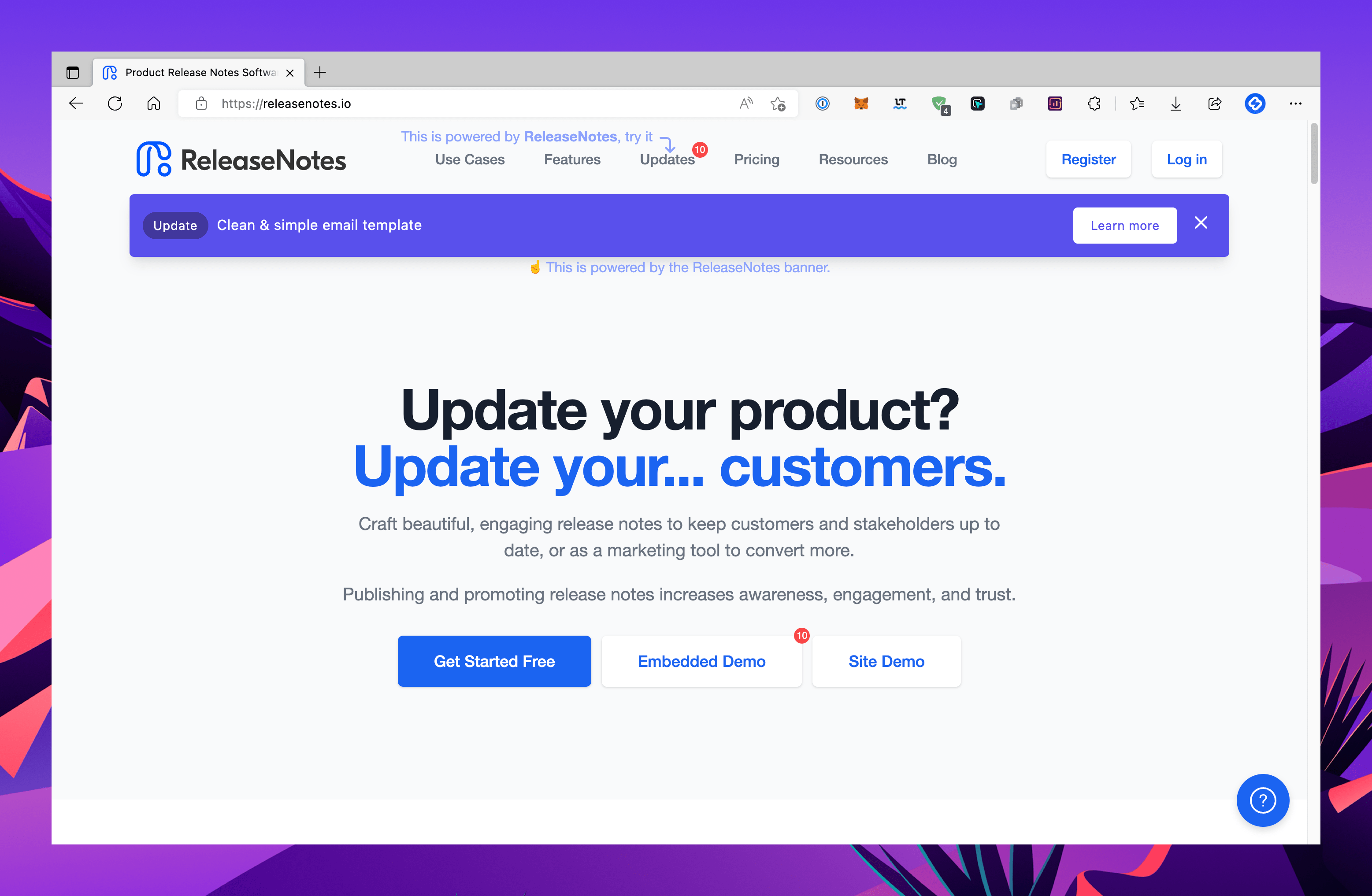
ReleaseNotes is a paid changelog tool. Apart from a changelog tool, it has several embeddable widgets to notify users about your releases.
You can use this to send email notifications to your users about your releases, but it requires an additional payment of $10/mo per 1000 subscribers. It's a weird upsell, and we believe this should have been a part of their plans.
It also lacks numerous other features like SEO setting, custom CSS / JS, feedback widget, feedback analysis, and much more.
People generally start using ReleaseNotes release notes as they are affordable at $29 a month, but you can get more value with Olvy's $ 20-a-month plan. Do check the full ReleaseNotes comparison with Olvy.
AnnounceKit
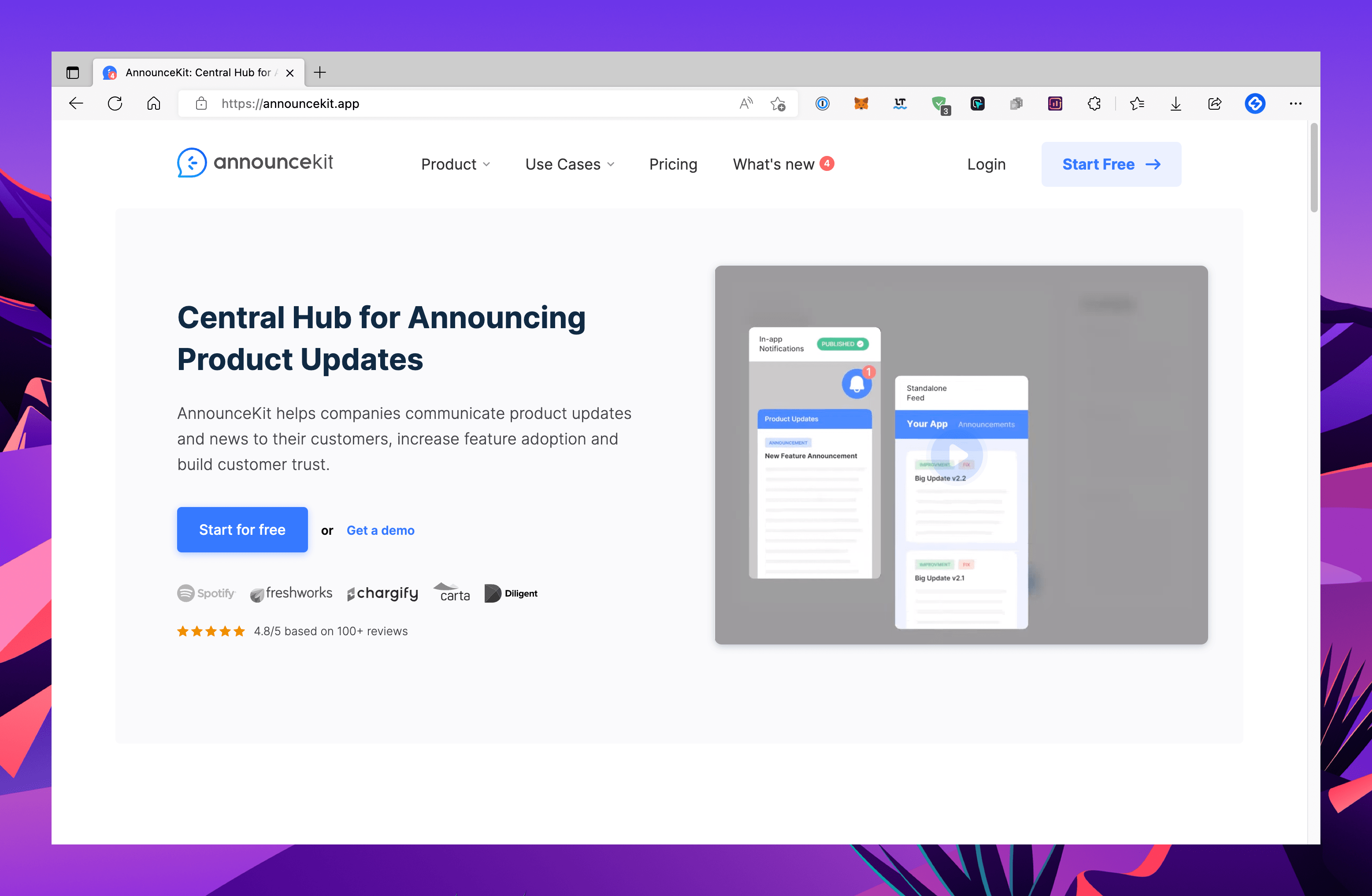
AnnounceKit markets itself as a central hub for product announcements, and it’s true to a certain extent.
They come with some great features like user tracking and email notifications, but that comes at $399/mo. (they have a lower plan for $119, which doesn’t include user tracking). For that price, you can get Olvy’s complete suite, which helps in product announcements but also helps in feedback analysis.
Head over to Olvy’s comparison page with AnnounceKit to get a better view of the differences. You’ll love us.
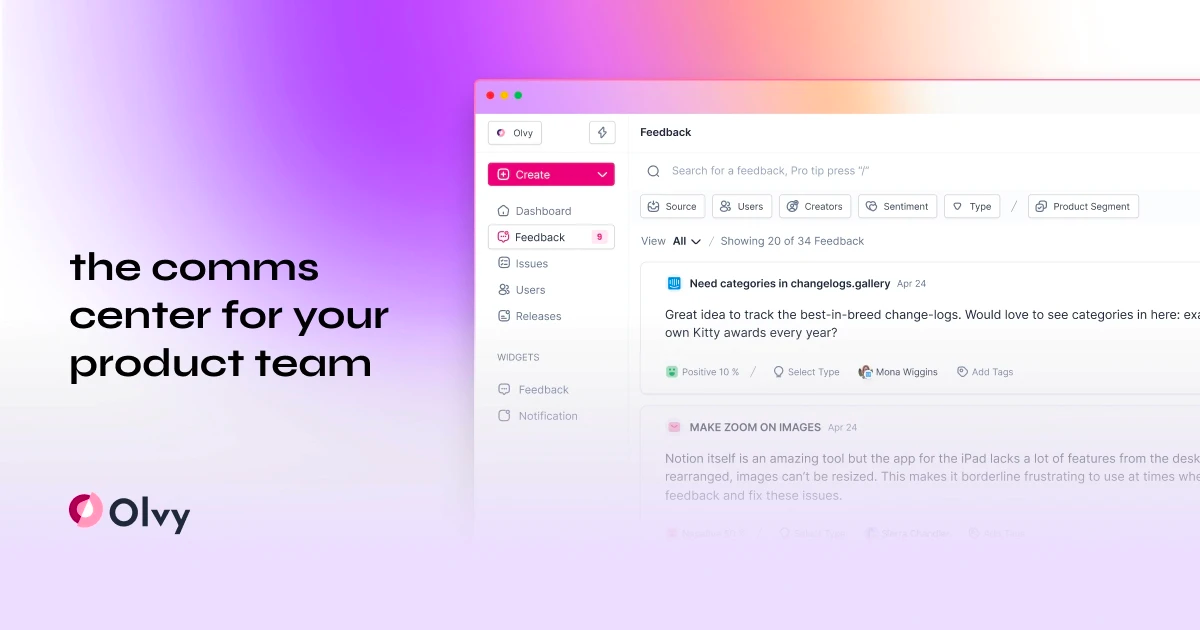
Summary
There are plenty of changelog tools out there, and a new one pops up every week, but your goal should be to choose the one that fits your needs the most.
At Olvy, we have brainstormed over multiple use cases and built a solution that fits most of the scenarios. So, when you choose Olvy as a changelog tool, you can be sure that you have chosen the best one out there, which also comes with multiple other features like feedback collection and analysis.
Written with love @ Olvy 💙


